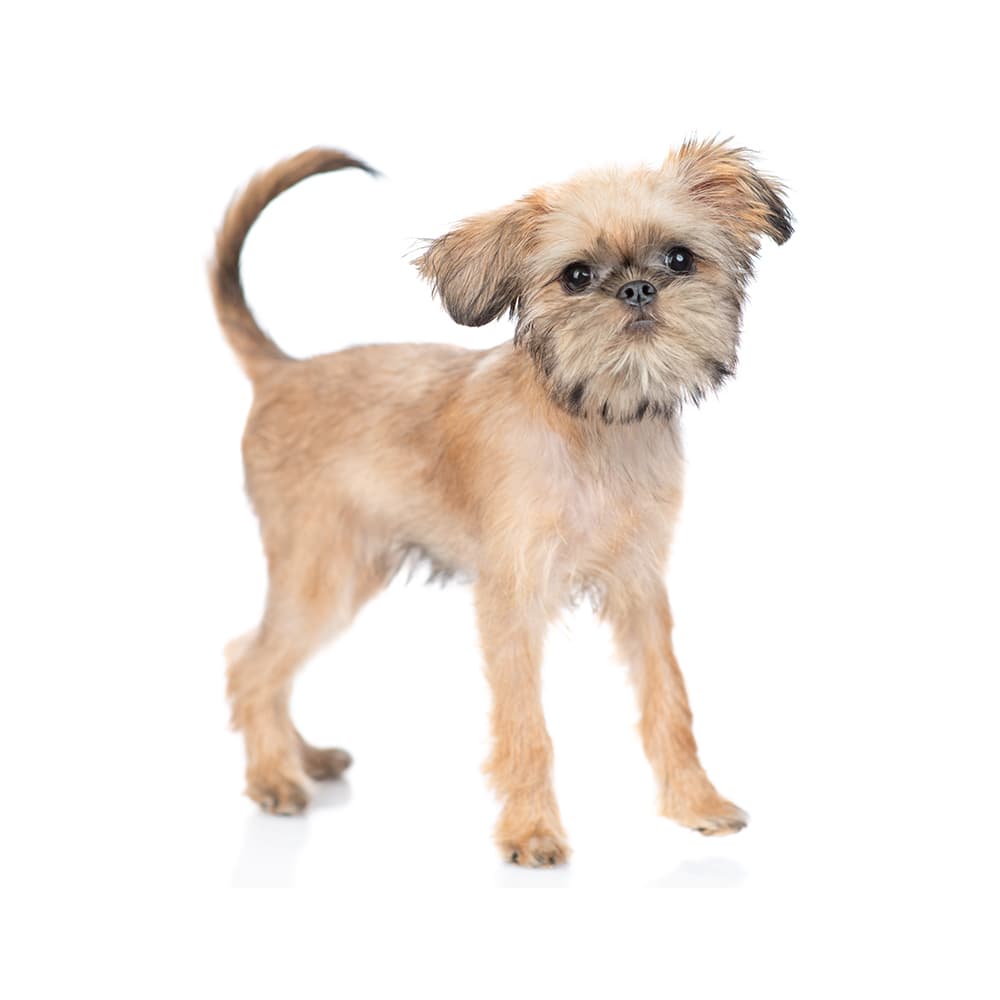Basepaws analyzes this breed as part of a group of other breeds.


Basepaws analyzes this breed as part of a group of other breeds.


Basepaws analyzes this breed as part of a group that also includes Brussels Griffon.
Despite being distinct in characteristics and origin, some pairs or groups of breeds lack the number of genetic differences required to distinguish these populations from one another, particularly when only a subset of these differences are inherited by a mixed breed dog. As we continue to expand our breed database, we aim to increase the resolution of our ancestry algorithm such that differentiating between increasingly specific ancestral sources becomes possible.

The Brussels Griffon is a breed that originated in Belgium in the 19th century. Its lineage is believed to include the Affenpinscher, the Pug, and the English Toy Spaniel. The breed was originally used to hunt and kill vermin in stables, thus earning their keep. As they became known, their charming personalities quickly made them popular as companion dogs. In the late 19th and early 20th century, these dogs gained recognition and popularity, even reaching royal status when they were owned by Queen Marie Henriette of Belgium. They were first shown at the Brussels Exhibition of 1880 and thereafter were exported to England and the United States, where they were officially recognized by the American Kennel Club (AKC) in 1910.
The Brussels Griffon may suffer from atopic dermatitis, cataracts, Chiari-like malformation, cleft palate, corneal dystrophy, cryptorchidism, distichiasis, ectopic ureters, elbow and hip dysplasia, epilepsy, hypothyroidism, Legg–Calvé–Perthes disease, optic nerve colobomas, patellar luxation, persistent hyaloid artery, persistent pupillary membranes, polydontia (retained primary teeth), progressive retinal atrophy, progressive retinal atrophy (PAP1), syringomyelia, ulcerative keratitis, and vitreous degeneration. Genetic testing for hereditary conditions can assist veterinarians with diagnosis and proactive care, as well as help breeders identify affected and carrier dogs.
Brussels Griffons are known for their spunky, self-important demeanor and their high degree of intelligence. Despite their small size, they are quite sturdy and are noted for their almost human-like expressions.
They are typically good with other dogs and pets, and they can be great companions for children, but their small size makes them somewhat fragile, so play must always be supervised. They can be somewhat suspicious of strangers, which can make them good watchdogs.
Like many small breeds, Brussels Griffons can be difficult to housebreak. Early and consistent training can help mitigate this. They respond well to positive reinforcement and reward-based training.
Brussels Griffons tend to be quite active and will require regular exercise. They're also known for their tendency to climb and can often be found in high places.
A canine genetic lineage is a group of individuals or entire breeds that descended from common ancestors predating modern breed formation. Often these lineages are associated with a ‘type’ of dog with a unique historical working role and associated behaviors (e.g., herding, scent hunting, etc.).
Breeds within the toy dog lineage were developed to be companion animals. They originated as lap dogs for royalty, nobility, and affluent individuals, and typically weigh less than 15 pounds. Breeds within the toy dog lineage were bred to be friendly and sociable, playful, and energetic while also having a heightened awareness of their environment.
Example breeds with ancestry from this lineage include Chihuahua, Maltese, and Shih Tzu.
According to the AKC, the black muzzle and whiskers of the Brussels Griffon earned them the nickname 'bearded dogs' in old folk songs.
A Brussels Griffon named Jill was featured alongside Jack Nicholson in the 1997 hit movie, "As Good As It Gets".
The Brussels Griffon isn't just a single breed, but it actually consists of three variations: the Brussels Griffon (Griffon Bruxellois), the Belgian Griffon (Griffon Belge), and the Petit Brabançon. While they all share similar body structure and size, their main differences lie in their coat and color. The Brussels Griffon has a rough red coat, the Belgian Griffon can have a rough coat in a variety of colors, and the Petit Brabançon sports a smooth coat in several colors.
https://www.ukcdogs.com/brussels-griffon https://vgl.ucdavis.edu/breed/brussels-griffon https://www.fci.be/Nomenclature/Standards/080g09-en.pdf
https://www.akc.org/dog-breeds/brussels-griffon/
Recommended by top vets with decades of experience
21 breeds
64 genetic health markers
50 genetic trait markers
